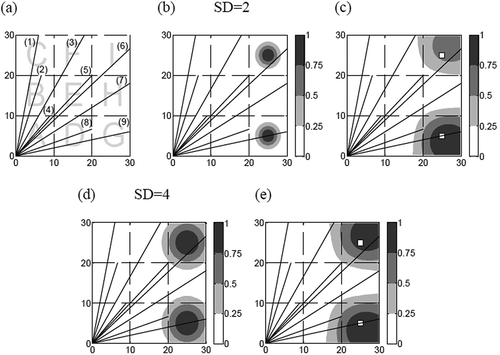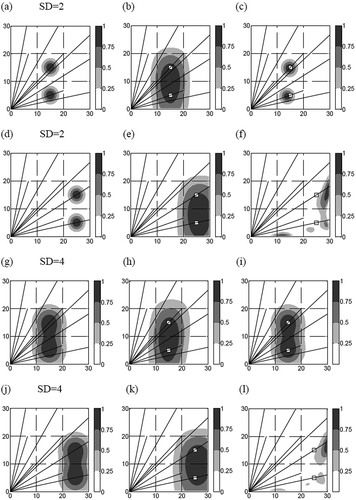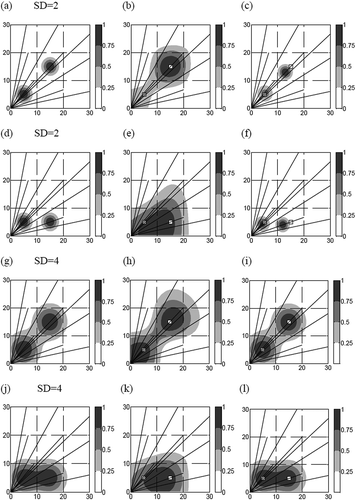Figures & data
Figure 1.(a) The plan view of the simulated beam geometry. The letters A to I represent the pixel IDs, and the numbers in parenthesis represent the beam IDs. (b) An example of the test map with two Gaussian distributions (SD = 2). (c) The reconstruction results of (b) by the NNLS algorithm. (d) An example of the test map with two Gaussian distributions (SD = 4). (e) The reconstruction results of (d) by the NNLS algorithm. The grayscale bars represent the relative concentration levels of the reconstructed plumes.

Table 1. Summary statistics of the NNLS reconstruction results for test maps with SD = 2
Figure 2.Examples of the reconstruction results for the test maps with two plumes in close proximity to each other. First column (a, d, g, j): Test maps. Second column (b, e, h, k): The NNLS reconstruction results. Third column (c, i): The SBFM reconstruction results; (f, l): the NNLS-GT reconstruction results. The white squares represent the real-source locations. The grayscale bars represent the relative concentration levels of the reconstructed plumes.

Figure 3.Examples of the reconstruction results from the NNLS and SBFM algorithms for test maps with one of the simulated plumes close to the origin. First column: Test map. Second column: The corresponding NNLS reconstruction results. Third column: The corresponding SBFM reconstruction results. The white square represents the real-source location. The grayscale bars represent the relative concentration levels of the reconstructed plumes.

Figure 4.Examples of the reconstruction results for test maps with three plumes. (a, b, c) The plumes are away from the origin. (d, e, f) The plumes are close to the origin. The white squares represent the real-source locations. The grayscale bars represent the relative concentration levels of the reconstructed plumes.
